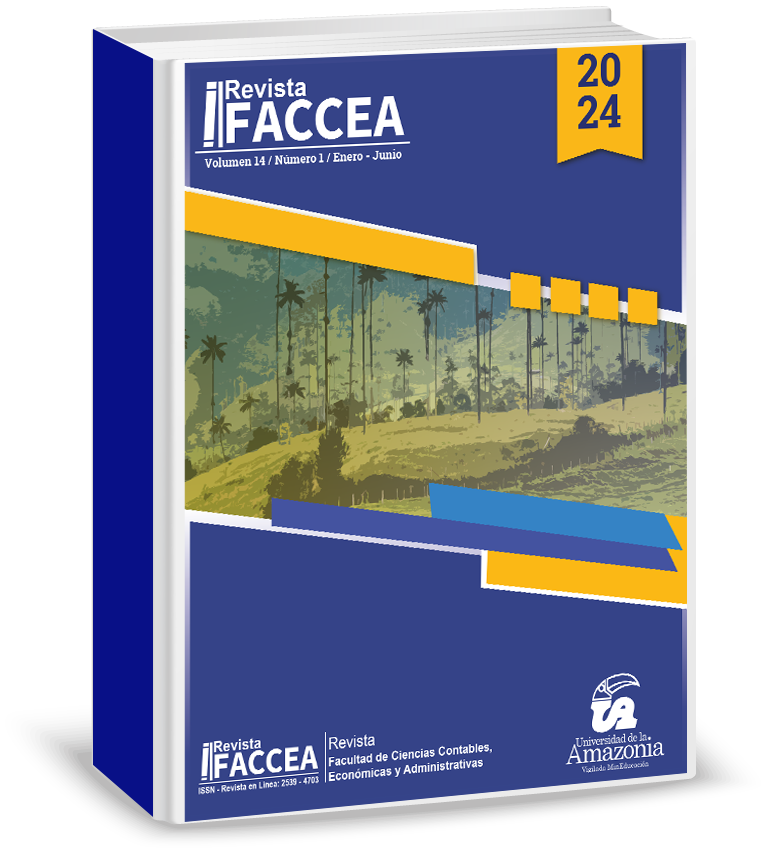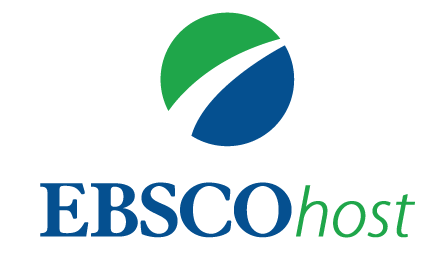Emergence as a valuation method contributing to bioaccounting processes in the framework of Ecoaccounting: a literature review
DOI:
https://doi.org/10.47847/faccea.v14n1a3Keywords:
Bioaccounting, ecosystem, emergy, valuation methods, bioaccounting recognitionAbstract
The various global changes concerning political, social, economic and environmental issues have forced man to rethink his daily practices, opening a paradigmatic gap towards an ecocentric vision. Accounting is no stranger to this situation, and has had to reinvent itself day by day to achieve sustainability based on assumptions such as bioaccounting, which orients the accounting process from its postulates; therefore, its main challenge is the valuation of wealth and the unification of valuation methods such as biophysical ones. Thus, this study had a methodological route of non-experimental design of descriptive scope, transactional cut, with a qualitative approach, aiming to analyze the emergy as a valuation method that contributes to the bioaccounting processes within the framework of eco-accounting. From the documentary analysis, it is inferred that compared to the magnitudes for energy analysis from the postulates of thermodynamics, the emergy is presented as the valuation method with greater methodological clarity, heading towards the sustainability of ecosystems, allowing the accounting and interpretation of natural elements and phenomena from the flows of materials, energies and capital, contributing to the understanding of the interactions of human beings and nature within the planet.
Downloads
References
Álvarez, H. (2019). Buscando La Ruta De La Medición-Valoración Ecológica No Monetaria, En La Teoría Tridimensional De La Contabilidad, T3C. Identidad Bolivariana, 3(2), 1–18. https://identidadbolivariana.itb.edu.ec/index.php/identidadbolivariana/article/view/62/138
Álvarez, H. (2020). Una aproximación al reconocimiento, medición y valoración de la Riqueza Patrimonial a la luz de la Ecocontabilidad (Teoría Tridimensional de la Contabilidad,– T3C). Identidad Bolivariana, 4(1), 1–14. https://identidadbolivariana.itb.edu.ec/index.php/identidadbolivariana/article/view/80/154
Amarasinghe, U. A., & Smakhtin, V. (2014). Water productivity and water footprint: misguided concepts or useful tools in water management and policy? Http://Dx.Doi.Org/10.1080/02508060.2015.986631, 39(7), 1000–1017. https://doi.org/10.1080/02508060.2015.986631
Aria, M., & Cuccurullo, C. (2017). bibliometrix: An R-tool for comprehensive science mapping analysis. Journal of Informetrics, 11(4), 959–975. https://doi.org/10.1016/J.JOI.2017.08.007
Artuzo, F. D., Allegretti, G., Santos, O. I. B., da Silva, L. X., & Talamini, E. (2021). Emergy unsustainability index for agricultural systems assessment: A proposal based on the laws of thermodynamics. Science of the Total Environment, 759, 143524. https://doi.org/10.1016/j.scitotenv.2020.143524
Ascani, I., Ciccola, R., & Chiucchi, M. S. (2021). A Structured Literature Review about the Role of Management Accountants in Sustainability Accounting and Reporting. Sustainability 2021, Vol. 13, Page 2357, 13(4), 2357. https://doi.org/10.3390/SU13042357
Balanta Martiez, V. J., & Serna Mendoza, C. A. (2021). Bio-accounting: an alternative to the challenges of the accounting science. In Warszawa (Ed.), Conflicts over use of urban and regional spaces in the time of climate changes (pp. 1–305).
Bedoya Parra, L. A., Serna Mendoza, C. A., & Mejía Soto, E. (2016). Contabilidad y sustentabilidad un enfoque desde las T3C. In Universidad Libre. https://hdl.handle.net/10901/19161
Brown, M. T., Odum, H. T., & Jorgensen, S. E. (2004). Energy hierarchy and transformity in the universe. Ecological Modelling, 178(1–2), 17–28. https://doi.org/10.1016/J.ECOLMODEL.2003.12.002
Costanza, R., D’Arge, R., De Groot, R., Farber, S., Grasso, M., Hannon, B., Limburg, K., Naeem, S., O’Neill, R. V., Paruelo, J., Raskin, R. G., Sutton, P., & Van Den Belt, M. (1997). The value of the world’s ecosystem services and natural capital. Nature 1997 387:6630, 387(6630), 253–260. https://doi.org/10.1038/387253a0
Costanza, R., de Groot, R., Sutton, P., van der Ploeg, S., Anderson, S. J., Kubiszewski, I., Farber, S., & Turner, R. K. (2014). Changes in the global value of ecosystem services. Global Environmental Change, 26(1), 152–158. https://doi.org/10.1016/J.GLOENVCHA.2014.04.002
García Casella, C. (2008). Necesidad De Reconstruir La Teoría De La Contabilidad Financiera . Contabilidad y Auditoría, 27, 29. http://157.92.136.232/index.php/Contyaudit/article/view/81
García Casella, C. L., & Fronti de García, L. (1996). Enfoque multiparadigmático de la contabilidad: modelos, sistemas y prácticas deducibles para ciertos contextos. 02(11). http://bibliotecadigital.econ.uba.ar/econ/collection/cya/document/cya_v2_ne2
Gómez-Baggethun, E., de Groot, R., Lomas, P. L., & Montes, C. (2010). The history of ecosystem services in economic theory and practice: From early notions to markets and payment schemes. Ecological Economics, 69(6), 1209–1218. https://doi.org/10.1016/J.ECOLECON.2009.11.007
Hau, J. L., & Bakshi, B. R. (2004). Promise and problems of emergy analysis. Ecological Modelling, 178(1–2), 215–225. https://doi.org/10.1016/J.ECOLMODEL.2003.12.016
Hu, Q., Huang, H., & Kung, C. C. (2021). Ecological impact assessment of land use in eco-industrial park based on life cycle assessment: A case study of Nanchang High-tech development zone in China. Journal of Cleaner Production, 300, 126816. https://doi.org/10.1016/J.JCLEPRO.2021.126816
Jiang, M. M., Chen, B., Zhou, J. B., Tao, F. R., Li, Z., Yang, Z. F., & Chen, G. Q. (2007). Emergy account for biomass resource exploitation by agriculture in China. Energy Policy, 35(9), 4704–4719. https://doi.org/10.1016/J.ENPOL.2007.03.014
Kortenkamp, K. V., & Moore, C. F. (2001). Ecocentrism And Anthropocentrism: Moral Reasoning About Ecological Commons Dilemmas. Journal of Environmental Psychology, 21(3), 261–272. https://doi.org/10.1006/JEVP.2001.0205
Lankia, T., Neuvonen, M., Pouta, E., Sievänen, T., & Torvelainen, J. (2020). Outdoor recreation in ecosystem service accounting: pilot accounts from Finland. Scandinavian Journal of Forest Research, 35(3–4), 186–197. https://doi.org/10.1080/02827581.2020.1760342
Li, T., Qiu, S., Mao, S., Bao, R., & Deng, H. (2019). Evaluating Water Resource Accessibility in Southwest China. Water 2019, Vol. 11, Page 1708, 11(8), 1708. https://doi.org/10.3390/W11081708
Liu, X., Liu, G., Yang, Z., Chen, B., & Ulgiati, S. (2016). Comparing national environmental and economic performances through emergy sustainability indicators: Moving environmental ethics beyond anthropocentrism toward ecocentrism. Renewable and Sustainable Energy Reviews, 58, 1532–1542. https://doi.org/10.1016/J.RSER.2015.12.188
Marrone, M., Linnenluecke, M. K., Richardson, G., & Smith, T. (2020). Trends in environmental accounting research within and outside of the accounting discipline. Accounting, Auditing and Accountability Journal, 33(8), 2167–2193. https://doi.org/10.1108/AAAJ-03-2020-4457
Martin, N. (2021). Risk Assessment of Future Climate and Land Use/Land Cover Change Impacts on Water Resources. Hydrology 2021, Vol. 8, Page 38, 8(1), 38. https://doi.org/10.3390/HYDROLOGY8010038
Mattesich, R. (1964). Accounting and Analytical Methods, Scholars Book Co. 4131 MT Vernon, Houston, Texas 77006, p. 139.
Mejía Soto, E. (2014). Biocontabilidad: Hacia una definición de una nueva disciplina contable. Lúmina, 15(15), 106–129. https://doi.org/10.30554/LUMINA.15.1069.2014
Miller, K. A., Belton, V., Miller, K. A., & Belton, V. (2014). Water resource management and climate change adaptation: a holistic and multiple criteria perspective. Mitigation and Adaptation Strategies for Global Change 2014 19:3, 19(3), 289–308. https://doi.org/10.1007/S11027-013-9537-0
Monfreda, C., Wackernagel, M., & Deumling, D. (2004). Establishing national natural capital accounts based on detailed Ecological Footprint and biological capacity assessments. Land Use Policy, 21(3), 231–246. https://doi.org/10.1016/j.landusepol.2003.10.009
Morgan, G. (1988). Accounting as reality construction: Towards a new epistemology for accounting practice. Accounting, Organizations and Society, 13(5), 477–485. https://doi.org/10.1016/0361-3682(88)90018-9
Odum, H. T. (Howard T. (1970). Environment, power, and society. Wiley-Interscience.
Odum, H. T. (1994). Ecological and General Systems An Introduction to Systems Ecology Revised Edition (University Press of Colorado (ed.)). https://upcolorado.com/university-press-of-colorado/item/1685-ecological-and-general-systems
Odum, Howard T. (1988). Self-Organization, Transformity, and Information. Science, 242(4882), 1132–1139. https://doi.org/10.1126/SCIENCE.242.4882.1132
Odum, Howard T. (1996). Environmental accounting : EMERGY and environmental decision making. 370.
Odum, Howard T., & Odum, E. C. (1981). Energy basis for man and nature (2. ed.). McGraw-Hill.
Odum, Howard T., & Odum, E. C. (2008). A Prosperous Way Down Principles and Policies.
Odum, T. H., & Odum, E. C. (2000). Energy systems diagramming. Modelin for All Scales, 1–38.
Peng, W., Su, D., & Wang, S. (2021). Development of an Innovative ICT Infrastructure for an Eco-Cost System with Life Cycle Assessment. Sustainability 2021, Vol. 13, Page 3118, 13(6), 3118. https://doi.org/10.3390/SU13063118
Rockström, J., Steffen, W., Noone, K., Persson, Å., Chapin, F. S., Lambin, E. F., Lenton, T. M., Scheffer, M., Folke, C., Schellnhuber, H. J., Nykvist, B., De Wit, C. A., Hughes, T., Van Der Leeuw, S., Rodhe, H., Sörlin, S., Snyder, P. K., Costanza, R., Svedin, U., … Foley, J. A. (2009). A safe operating space for humanity. Nature 2009 461:7263, 461(7263), 472–475. https://doi.org/10.1038/461472a
Serna Mendoza, C. (2016). La Oferta Natural Y La Demanda Social: Un Espacio De Posibilidades Para El Desarrollo Sostenible. Un Estudio De Caso. Revista Del CESLA. International Latin American Studies, 19. http://cejsh.icm.edu.pl/cejsh/element/bwmeta1.element.desklight-dff75d63-950c-41da-9b39-ae3d63f6364e
Serna Mendoza, C. A., Vélez Rojas, O. A., & Londoño Pineda, A. A. (2015). Cambio climático, balance hídrico y eficiencia energética en algunas estaciones climáticas en Colombia. Espacios. https://www.revistaespacios.com/a16v37n07/16370707.html
Mejia Soto, E., Roa, G. M., Alberto, C., Salazar, M., De Jesús, O., & Galvis, M. (2014). Marco conceptual de la biocontabilidad. Revista Sinapsis, 6(1), 94–111. http://app.eam.edu.co/ojs/index.php/sinapis/article/view/137
Torres-Verzagas, B. E., Leyva-Galán, Á., & Del Pozo-Rodríguez, P. P. (2006). Emergy assessment of integrated production systems of grains, pig and fish in small farms in the South Brazil. Ecological Modelling, 193(3–4), 205–224. https://doi.org/10.1016/J.ECOLMODEL.2005.07.023
Vassallo, P., Paoli, C., Buonocore, E., Franzese, P. P., Russo, G. F., & Povero, P. (2017). Assessing the value of natural capital in marine protected areas: A biophysical and trophodynamic environmental accounting model. Ecological Modelling, 355, 12–17. https://doi.org/10.1016/j.ecolmodel.2017.03.013
Viglia, S., Civitillo, D. F., Cacciapuoti, G., & Ulgiati, S. (2018). Indicators of environmental loading and sustainability of urban systems. An emergy-based environmental footprint. Ecological Indicators, 94, 82–99. https://doi.org/10.1016/j.ecolind.2017.03.060
Wang, J., Hou, B., Jiang, D., Xiao, W., Wu, Y., Zhao, Y., Zhou, Y., Guo, C., & Wang, G. (2016). Optimal Allocation of Water Resources Based on Water Supply Security. Water 2016, Vol. 8, Page 237, 8(6), 237. https://doi.org/10.3390/W8060237
Wu, M., Li, Y., Xiao, J., Guo, X., & Cao, X. (2022). Blue, green, and grey water footprints assessment for paddy irrigation-drainage system. Journal of Environmental Management, 302, 114116. https://doi.org/10.1016/J.JENVMAN.2021.114116
Downloads
Published
Issue
Section
License
Copyright (c) 2024 Journal of the Faculty of Accounting, Economics and Administrative Sciences -FACCEA

This work is licensed under a Creative Commons Attribution-NonCommercial-ShareAlike 4.0 International License.



















